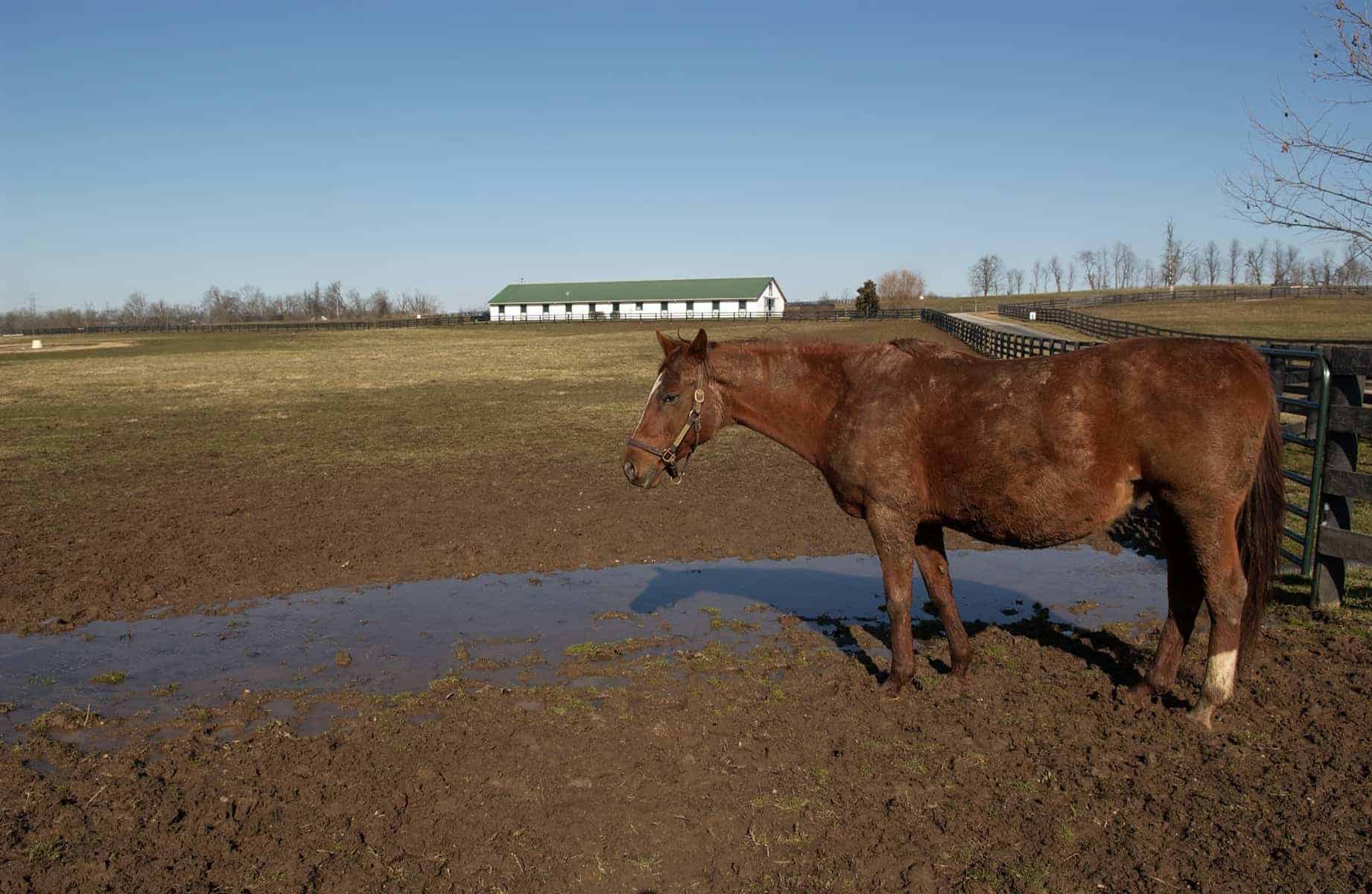Managing Mud on Horse Farms

Horses are creatures of habit and return to the same grazing areas repeatedly. This behavior causes overgrazing and trampling that inevitably reduces grass coverage and results in muddy areas. Recent extreme weather conditions have further thinned Kentucky pastures, magnifying the mud issue. Mud is not only unattractive, it also is dangerous for horses and people to move around in, harbors bacteria, and decreases pasture productivity. However, the following pasture management practices can help reduce mud and its associated challenges.
Overseeding
Overseeding heavy traffic areas can prevent or correct mud issues. Depending on your method, overseeding can be a long-term solution or a short-term simple fix. The ideal method is to remove horses from the paddock or fence off an area, then seed into a prepared seedbed or killed sod with perennial grasses such as Kentucky bluegrass, orchardgrass, and endophyte-free tall fescue. This requires seeding equipment, sacrificing some of your turnout, and waiting six or more months for the seedlings to fully establish, but results can last for years.
On the other hand, perennial and annual ryegrass provide short-term overseeding options for horse owners that are quick to establish and relatively inexpensive. Annual ryegrass will establish very quickly and is inexpensive; however, it only survives until midsummer. Perennial ryegrass survives for about two years in Kentucky if not overgrazed, but it is a bit more costly and slightly slower to establish. Unlike other cool season grasses, ryegrasses can be broadcast on top of the ground and will still germinate and take root. In small, high-traffic areas, this might be the simplest mud management method. Keeping horses and people off this area as long as possible will produce the best results; consider relocating high-traffic sites such as hay racks and water tanks, or walking horses through a different gate until the root is established. Broadcast seeding (also known as top seeding) of other forage species (Kentucky bluegrass, orchardgrass, etc.) will not be successful unless the area is dragged or cultipacked (to compact the soil) after seeding to bury the seed. Even when overseeding ryegrass, dragging is recommended
Create a free account with TheHorse.com to view this content.
TheHorse.com is home to thousands of free articles about horse health care. In order to access some of our exclusive free content, you must be signed into TheHorse.com.
Start your free account today!
Already have an account?
and continue reading.
Written by:
University of Kentucky College of Agriculture, Food and Environment
Related Articles
Stay on top of the most recent Horse Health news with















